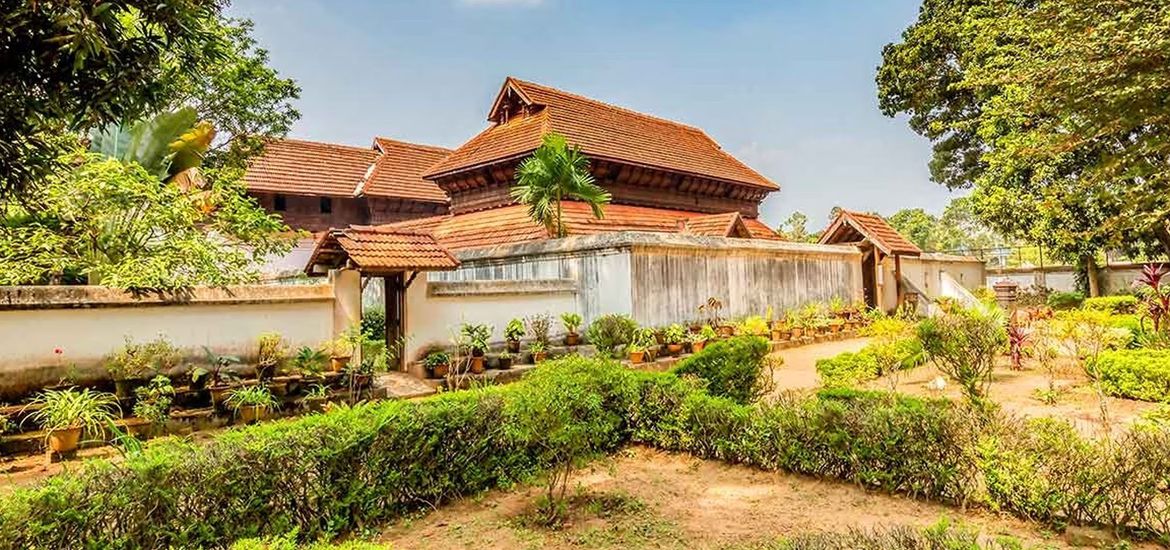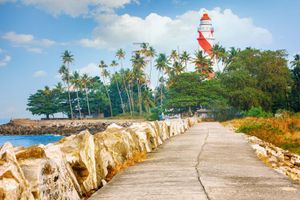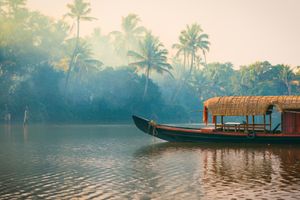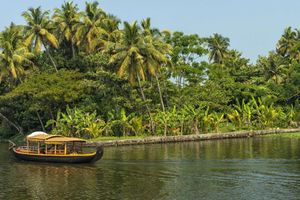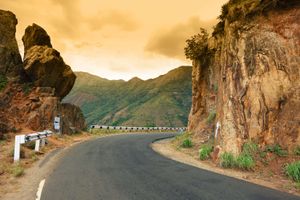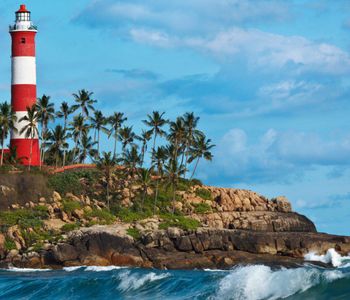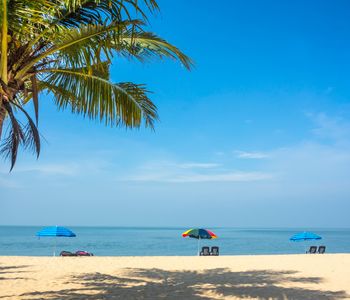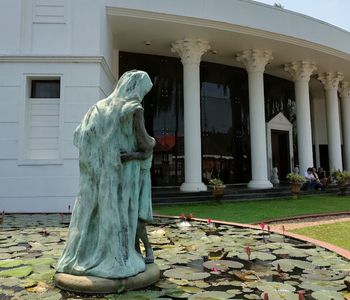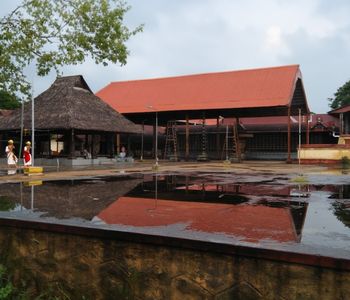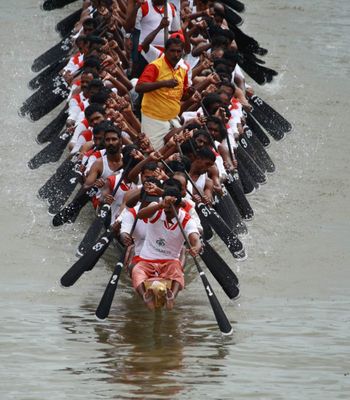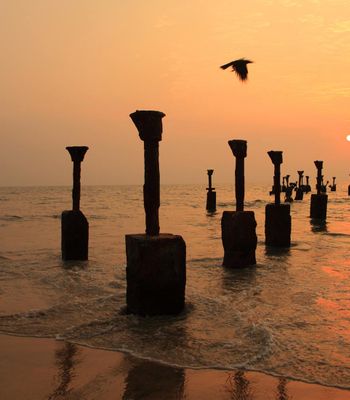Named after the nearby Krishnaswamy Temple, Krishnapuram Palace is a famous historical site located in the peaceful village of Krishnapuram, about 2 km south of Kayamkulam town. Built in the 18th century by Anizham Thirunal Marthanda Varma, the king of Travancore, it is positioned atop a small hill, surrounded by a terraced garden with fountains, ponds, and lawns.
Today, the palace serves as a museum, enabling visitors to catch a glimpse of Kerala’s royal history. The palace houses many ancient artefacts, such as the king’s Kayamkulam Val (sword), Buddha's 10th-century statue, and ceremonial utensils, among others.
History of Krishnapuram Palace
Krishnapuram Palace was once the residence of the rulers of Travancore. King Marthanda Varma of Travancore constructed the palace after his victory and annexation of Odanad in the Odanad–Travancore War of 1746. Prior to building the palace, the King demolished an earlier structure that King Veera Ravi Varma of Odanad had built.
Prime Minister Ayyappan Marthanada Pillai later expanded the palace. Over the years, the palace went through several changes and was even abandoned for a while. Later, it was restored by the Archaeological Department of Kerala and turned into a museum.
The palace is now home to many interesting historical items, including old coins, royal furniture, and ancient manuscripts. The Gajendra Moksham mural, which tells a Hindu mythological story comprising an elephant and Lord Vishnu, is one of the biggest highlights of the museum. Measuring 154 square feet in size, it is the largest of its kind found in Kerala. The palace also gives visitors a chance to see how Kerala’s kings once lived, making it an exciting place for history lovers.
The Architectural Wonder of Krishnapuram Palace
The Krishnapuram Palace is famous for its elegant structure. It is a perfect example of Kerala-style architecture, featuring a traditional nalukettu (a four-block structure with a central courtyard), sloping tile roofs, and wooden carvings.
- Traditional Design & Smart Ventilation: The palace follows Vastu Shastra principles, with sixteen blocks and four open courtyards (Nadumuttam). Windows, doors, and ventilators were placed carefully to ensure fresh air circulation and natural lighting in all rooms.
- Strong, Weather-Proof Structure: Built using laterite stones, teak, rosewood, and Angili wood, the palace is both sturdy and artistic. Verandas were added all around to protect the walls from rain.
- Beautiful Interiors: The palace has 22 rooms with ornamental wooden partitions. Instead of metal, wooden hinges and locks were used for doors and windows. An underground pond extends to the centre, acting as a natural air-conditioning system to keep rooms cool.
- Royal Status & Symbolic Elements: The palace has multiple Padippuras (ornate entrance structures), which were symbols of prestige. Additional openings were designed to prevent any negative effects of Murmavedham (secret effects).
What’s Inside the Palace? Must-See Sections
The palace is now a museum managed by the Archaeology Department, and it houses some incredible historical pieces. Here are the top things you must check out:
Gajendra Moksham Mural
Inside the palace, there is a 3-metre-tall mural of Gajendra Moksham, the largest single-piece mural painting in Kerala. It shows an elephant praying to Lord Vishnu while gods, saints, and goddesses watch. The mural was placed near the palace pond so kings could offer prayers after their daily baths.
The Kayamkulam Vaal
A double-edged sword called Kayamkulam Vaal is one of the most famous exhibits in the museum. Unlike regular swords, this sword has both its edges sharpened. The Kayamkulam Rajas used it in the 18th century, and it was a prized possession of the king.
Buddha Mandapam
A rare 10th-century Buddha statue is displayed in a beautifully landscaped garden. This is one of four Buddha statues found in Alappuzha, proving that Buddhism was once widely practiced in the region. The idol is made of a single piece of stone and features a skull cap adorned with pearls or diamonds.
Lesser-Known Facts About Krishnapuram Palace
Here are some lesser-known facts about the Krishnapuram Palace:
- It Was Once a Military Outpost: Before becoming a museum, the palace played an important role in the Travancore kingdom’s defense. Soldiers were stationed here to protect the land from invaders.
- Secret Passages Exist: The palace has underground tunnels believed to have been used as escape routes during wars.
- It Was Almost Destroyed: The palace was abandoned for a long time and started to decay. It was later restored by the Archaeology Department and turned into a museum.
Best Time to Visit Krishnapuram Palace
The best time to visit Krishnapuram Palace is from December to February. The gardens surrounding the palace look stunning during this time, and the pleasant weather makes it perfect for taking pictures.
From March to May, the weather is warmer, particularly in the afternoon. This time of year offers the opportunity to explore the palace and its surroundings without the crowds, allowing for a more relaxed experience. Visiting in the morning or evening when it’s cooler is ideal, and don’t forget to bring water and wear light clothing to stay comfortable.
The monsoon season (June to September) brings heavy rainfall. The greenery around the palace looks fresh and beautiful after the rain. If you enjoy peaceful places and don’t mind carrying an umbrella, this can be a nice time to visit.
How to Reach Krishnapuram Palace
Krishnapuram Palace is easily accessible by air, train, and road, making it a convenient destination for travellers from all over the world. No matter where you're coming from, there are multiple ways to reach the palace.
By Air
The nearest airport is Trivandrum International Airport (TRV), which is about 120 km away. From the airport, you can take a taxi to reach the palace. If you are coming from Cochin International Airport (COK), it is 140 km away, and the journey can take around 4 hours by car.
By Train
The nearest railway station is Kayamkulam Junction, located 8 km away from the palace.Once you reach Kayamkulam, you can take an auto-rickshaw or a taxi to the palace. The ride takes about 11-15 minutes.
By Road
Government and private buses run frequently from Kochi, Trivandrum, and Kottayam to Kayamkulam. The bus is the cheapest way to travel, but it might take longer if there is traffic. If you prefer a direct and easy ride, you can hire a taxi from Kayamkulam, Alappuzha, or Kollam. The road journey itself offers picturesque views of Kerala’s lush landscapes, including its backwaters and coconut groves.
Krishnapuram Palace is a quiet and interesting place to explore Kerala’s history and culture. Its traditional architecture, peaceful gardens, and well-preserved artefacts create a calm and immersive experience. Whether you're interested in history or simply looking for a relaxing visit, the palace offers nostalgia wrapped in a serene setting.
